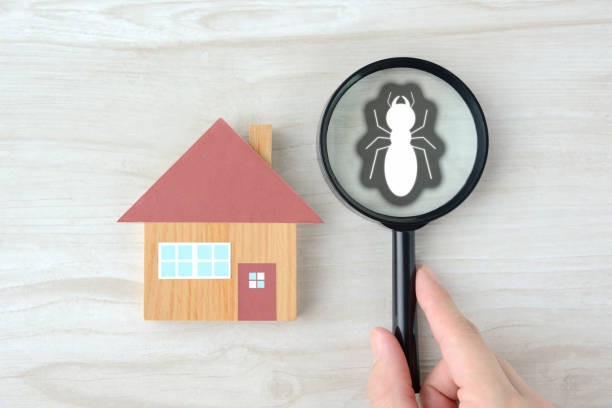
Most homeowners worry about mold growing in their homes, but they often overlook another risk.
Termites are common around moldy areas and can cause significant health problems. Migraines, infections, and breathing problems can all stem from termites, which is why you need to protect your home. To prevent different types of termites from taking over, you must be able to identify the warning signs.
Keep reading to learn about the most common signs of termites so you can address the problem before it grows!
Hollow-Sounding Wood
One of the best signs of termites is hollow wood, which can quickly be tested for.
Go to areas you suspect termites might be and tap or knock on the wood. If the wood sounds hollow and you hear an echo, you will need to dig deeper and see what’s underneath.
Termites have a diet that consists of cellulose, which is found in wood. These pests can chew through almost any building material, including sheetrock and drywall. If you notice the wood is sounding hollow, you need to get rid of it completely to prevent further damage.
Discolored Stains on Drywall
If you’re starting to see small stains on your drywall, you might have a termite problem.
Many people see discolored stains and assume it’s a water problem. Although it could start as a small leak, termites thrive in damp and moldy conditions. If your walls have stains that are soft to the touch, try to pinpoint the original location of the damage.
Sometimes, these stains will appear as lines on the walls. If faint and discolored streaks show through your drywall, don’t just paint them over and carry on. You’ll need to call professionals since DIY termite removal can be difficult.
Typically, sanding and repainting will cover up damage, but in some cases, you may have to replace the drywall.
Small Holes in the Walls
The next time you’re dusting or painting, take a close look at the walls and try to find small holes.
Needle or pinpoint-sized holes often increase in the presence of termites. This is because they chew through the drywall and paint, but are small to the naked eye. Small holes can be found in drywall, paint, and sheetrock.
Make sure you take a good look at your wallpaper, as they like to eat the paper particles. It’s not uncommon for termites to go unnoticed because of colorful or patterned papers.
Bubbling or Peeling Paint
Many homeowners often mistake termites for water damage.
As termites move around your home, they eat away the paint and get underneath, which can make it look like water is inside. Pay attention to your paint on dry and warm days, especially with it being summer.
Chipped and cracked paint that is layered can also be a red flag for termites. Baits and termiticide can help control infestations, however, a termite exterminator is recommended.
When a house is properly waterproofed, paint should act as a sealant to keep termites away. The ingredients in paint don’t offer safe conditions for these pests, but once water separates the paint from the wall, it can infest the area.
If you see bubbling paint, don’t poke it. Creating a hole can break the barrier between you and dozens of termites. Wait until an exterminator arrives before popping the bubbles.
Squeaky Floorboards
Depending on when your house was built and its repairs, you may have squeaky floorboards.
It may be easy to overlook these quirks if your house was built in the early 1900s, but you should always take a second look. If your floorboards are squeaking and creaking more than normal, it could be a sign that you have termite damage.
As termites eat the wood particles in your home, they weaken the boards and their durability. Over time, your floor could become sensitive to movement because of holes in the boards. If you don’t fix this, it could impact the nails and structure of the floor.
Take action quickly if boards feel loose and are getting louder with each step. They could give at any moment and put your family at risk.
Loose Tiles
Tiles are perfect for floors and backsplashes, but they aren’t impenetrable.
Termites live in moist areas, but they can also increase moisture as they nest. With too much moisture, tiles can become loose and crack. When termites move behind the tiles, they impact the adhesive and some of them eat through these products.
Ceramic and porcelain tiles are the most common styles affected by termites. View this website for pest control services if your tiles have holes and are coming loose.
Immobile Doors
Wooden doors can swell in humidity, but they can still open and close.
If your doors don’t properly open and close, termites might be impacting the frame.
Termites tend to attack exposed wood, which is on your door, the doorframe, and the walls. They like to wrap around door frames and get into the corners, which impacts your ability to close the door.
Eliminate All Signs of Termites
By preparing your home and getting pest control services, you can eliminate all signs of termites in the home.
Although termites can be difficult to see, there are plenty of signs you can’t miss. By listening to your floors and the wood, you can identify if something is off and get an exterminator to take a second look. Avoiding the issue could result in a larger infestation and put your home’s integrity at risk.
Take a look at our blog for more content about home improvement and healthy living!
Published by HOLR Magazine.


